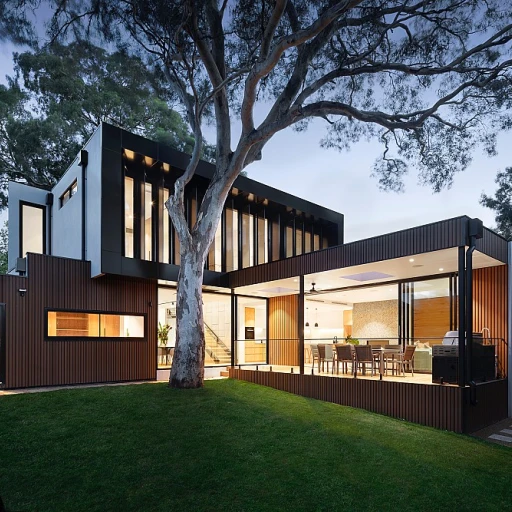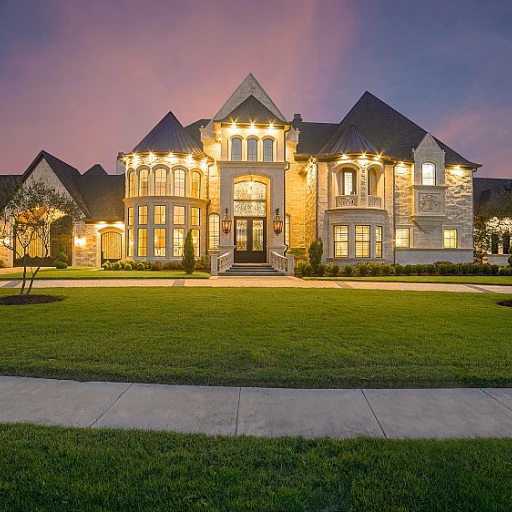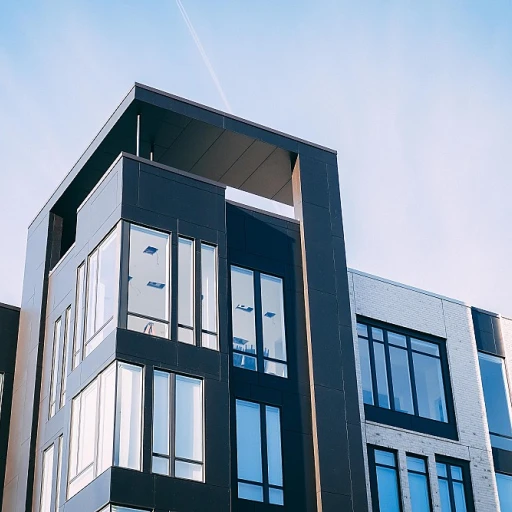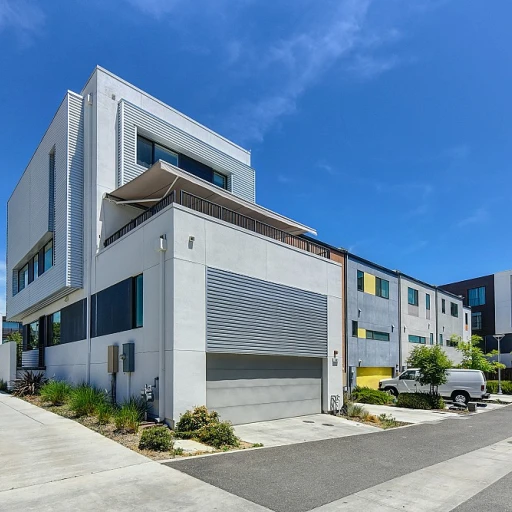Understanding sedgwick county real estate taxes
Sedgwick county's real estate landscape explained
Real estate taxes in Sedgwick County, Kansas can be a bit overwhelming if you've never dealt with them before. Let's break it down step by step, so you know exactly what's going on when it comes to paying your property tax bills.
Property assessments and valuations
The first step in understanding real estate taxes in Sedgwick County is knowing how properties are assessed. According to the Sedgwick County Appraiser's Office, properties are evaluated annually to determine their fair market value (Sedgwick County Appraiser's Office). This value is used to calculate your property tax bill. If you feel the valuation is inaccurate, you’re allowed to appeal the assessment.
What makes up your tax bill
Property taxes aren't just a single, flat rate. They’re made up of several components. The base amount comes from the property's assessed value. This value is multiplied by the mill levy rate, which varies between different locations within Sedgwick County. For example, Wichita generally has a different mill levy rate compared to other smaller cities within the county.
Understanding mill levy
The mill levy is a crucial element in understanding how property taxes are calculated. A mill equals $1 of tax for every $1,000 of assessed property value. So, if your property's assessed value is $200,000 and the mill levy is 130 mills, your property tax for the year would be: (200,000 / 1,000) * 130 = $26,000.
What do these taxes fund?
Real estate taxes collected in Sedgwick County go towards various public services. This includes funding for schools, emergency services, and public infrastructure. According to a 2022 budget proposal, a significant portion of these funds is allocated to the Sedgwick County fire and EMS departments.
Expert opinions on sedgwick county real estate taxes
According to Jim Howell, a member of the Sedgwick County Commission, balancing economic growth with reasonable tax rates is key. “While it's essential to maintain and improve public services, we must also ensure that the tax rates do not become a burden on homeowners,” he says. Economist Matthew Kelly of Wichita State University echoes this, emphasizing the importance of a balanced approach to taxation.
For more insights about how real estate careers can be rewarding, even amidst complex tax landscapes, you might find this blog post about real estate internships enlightening.
Property tax rates and mill levy in sedgwick county
Breaking down property tax rates: what you need to know
Property tax rates in Sedgwick County, Kansas, can be a bit of a puzzle. To make sense of it, let's simplify by talking percentages and levies. The 2022 property taxes consisted of a county mill levy of 29.393 mills, combined with additional levies from municipalities and school districts. Overall, the total levy for homeowners in Wichita reached about 120 mills on average.
Understanding mill levy calculations
The term 'mill levy' might sound like jargon, but it's simply a system for calculating property tax. One mill represents $1 in tax per $1,000 of assessed property value. In Sedgwick County, homes are assessed at 11.5% of their market value. So, for a house valued at $200,000, its assessed value would be $23,000. At a mill rate of 120 mills, the annual property tax would be calculated as:
Assessed Value 23,000 x Mill Rate 0.120 = $2,760 in property taxes.
Influence of local budget decisions
Local budgets heavily influence how the mill rate is set each year. For instance, the Sedgwick County 2023 budget proposal called for maintaining services without increasing the tax rate. Officials like County Commissioner Jim Howell have emphasized the importance of not burdening taxpayers while still funding essential services like EMS and emergency communications.
Factors affecting changes in tax rates
Several elements can cause fluctuations in the tax rates. These often include changes in state funding, voter-approved bonds for school districts, and rising costs for local government operations. According to Lindsay Poe Rousseau, the county's CFO, economic factors such as property value appreciation and sales tax collections also play critical roles.
Voices from the community
Community feedback is crucial in these scenarios. Sedgwick County homeowners, represented in budget meetings and public forums, frequently express concerns over rising property taxes. For example, Sarah Lopez, another county commissioner, has voiced the need for balancing tax rates with community needs.
Understanding property taxes in Sedgwick County involves unraveling its rates and the mill levy system. If you're keen to learn more about real estate careers, check out our detailed post on real estate internships.
How to calculate your property taxes in sedgwick county
What goes into calculating your taxes?
First things first, to figure out your property taxes here in Sedgwick County, you need to grasp the concept of the "mill levy." It's kind of complicated but stick with me. A mill levy is basically the tax rate applied to the assessed value of your property. One mill equals $1 in property tax levied per $1,000 of a property's assessed value.To put this into perspective, let's talk about the assessed value. In Kansas, your property's assessed value is determined by multiplying the market value of the property by the assessment rate. Residential property has an assessment rate of 11.5%, so if your home is worth $200,000, the assessed value would be $23,000. Now, this isn’t the end total; it's just the number used in calculations.Mill levy rates and their role
Now we add in the mill levy. Let’s say Sedgwick County has a combined mill levy rate of 120 mills, which includes county, city, and school district taxes. You'd multiply the assessed value ($23,000) by the mill rate (0.120), which gives you a tax bill of $2,760 annually. Good to know, huh? I bet you’re wondering where to find these mill rates. The Sedgwick County Appraiser's Office publishes this info, and let me tell you, being informed is your best strategy. According to Tom Stolz, Sedgwick County Manager, knowing your mill levy can help you predict how much you’ll owe each year.Using the Sedgwick County property tax calculator effectively
Lucky for us, Sedgwick County has an online property tax calculator that is super handy. Simply plug in your property’s appraised value, and the calculator does the rest. This tool is great for weekly or monthly budgeting.Real life example
Here's an example for you - Jane lives in Wichita, part of the Sedgwick County, with a house valued at $150,000. Using the 11.5% assessment rate, her assessed value is $17,250. Let’s assume the mill levy is 130 mills this year. Jane's property tax bill calculates to $2,242.50 for the year. She checks her bill on the Sedgwick County Appraiser's website to ensure there are no surprises.Importance of staying updated
Don't forget, these rates can change. The county commission reviews the rates every year as part of the budget proposal process. So, if Jim Howell or any other county commissioner hints at a change, take note. Missed the previous steps on how to get to this point? Check out how the property tax rates and mill levy system work in Sedgwick County in our previous deep dive into the subject.Exploring the sedgwick county budget and revenue neutral rate
Dissecting the budget: where do your taxes go?
Understanding where your hard-earned money goes can be a challenge; let’s break down the sedgwick county budget and revenue neutral rate to get a clearer idea.
Much of the real estate tax revenue collected in Sedgwick county goes to fund essential services, ranging from education to public safety to infrastructure. In 2023, the total annual budget for Sedgwick County was around $457.4 million, according to official county reports. A significant portion of this budget is financed through property taxes.
Public services: the major spenders
The Sedgwick County Commission has allocated substantial sums to public services, which are crucial for the community. For example, Jim Howell, one of the commissioners, emphasized that half of the county’s property tax revenue goes towards funding schools and educational programs. According to a comprehensive study by The Wichita Eagle, in 2022, roughly 50% of property taxes collected were allocated to educational uses, including primary, secondary, and post-secondary education.
Mill levy rates explained
Within Sedgwick County, the mill levy rate has a significant impact on how much residents end up paying in property taxes. This rate varies based on the county's budget needs for the fiscal year. In 2022, the county's mill levy rate was set at 29.383 mills. This was a slight decrease from the previous year, reflecting efforts to meet the revenue neutral rate criteria established by the Kansas state government.
The revenue neutral rate: keeping taxes stable
The state of Kansas has introduced a revenue neutral rate requirement, compelling counties like Sedgwick to adjust their budgets to maintain a balance. This system aims to keep property tax collections stable, even as property values fluctuate. As Sedgwick county increases its home values for assessments, adjustments in the mill levy are made to ensure that property owners aren't disproportionately taxed.
Public safety and health: priorities in the budget
Another significant component of the budget is public safety and health. According to Sedgwick county’s official budget report, in 2023, approximately 30% of the property tax revenue was directed towards the Sedgwick County EMS, Sheriff's Office, and other public safety services. Sedgwick County Manager Tom Stolz noted that maintaining strong emergency services is a top priority for the county commission.
While a lot of the property tax money goes into providing quality services and infrastructure, homeowners like you want to know how it directly affects them. Stay tuned as we continue to explore more aspects and impacts of Sedgwick County property tax system.
Payment options and deadlines for sedgwick county real estate taxes
Various payment methods and plans
When it comes to paying real estate taxes in sedgwick county, homeowners have several options. Property owners can pay their taxes through the county treasurer office, online portals, via mail, or through their mortgage company. The county even accepts partial payments, making it easier for those who might struggle to pay the full amount at once. According to the Sedgwick County Treasurer's Office, many residents appreciate the flexibility in payment options, especially for large tax bills.
Important deadlines to remember
Knowing the critical deadlines is vital to avoid late fees. In sedgwick county, real estate tax payments are generally divided into two installments. The first half is due on December 20th, while the second half must be paid by May 10th of the following year. Missing these deadlines can result in penalties and interest added to the tax bill, which can be a significant burden on homeowners. A study by the Kansas Policy Institute highlights that timely payments can save homeowners from additional financial strain.
Consequences of late or missed payments
Failing to meet the payment deadlines can lead to severe consequences. Initially, late payments incur a penalty of 1% per month on the unpaid portion. Over time, unpaid property taxes could even result in a tax foreclosure action by the county. For example, between 2020 and 2021, Sedgwick County saw an increase in tax foreclosure cases due to missed payments, as reported by the Sedgwick County Tax Office. Homeowners are advised to stay vigilant about their tax obligations to avoid these harsh outcomes.
Options for tax relief and exemptions
Some homeowners in Sedgwick County might be eligible for specific tax relief programs or exemptions. These include Homestead Refund Claims and programs for seniors and disabled veterans. State representative Jim Howell has been an advocate for increasing awareness and accessibility to these programs. According to the Sedgwick County Assessor's Office, understanding and utilizing these exemptions can significantly lower the tax burden for eligible residents.
How to set up an automated tax payment
Setting up automated payments is a convenient way to ensure you never miss a deadline. Homeowners can sign up for automatic withdrawal through the Sedgwick County Treasurer's online system. According to a report by the county treasurer, this method has been increasingly popular amongst busy residents who prefer a 'set it and forget it' solution. By automating payments, you minimize the risk of incurring late fees and maintain a good standing with the county.
Impact of property taxes on sedgwick county homeowners
How property taxes influence homeowners
Sedgwick County's property taxes have a significant financial impact on homeowners. Take Wichita, for instance. In 2022, the average property tax rate for homeowners in Wichita was around 1.4% of the home's market value. For a median home valued at $150,000, this amounts to an annual tax bill of approximately $2,100. This is a substantial addition to the annual budget, not to mention the costs covered by mortgage companies and other related expenses.
It's important to highlight that the tax rate can vary depending on the specific area within Sedgwick County. Property taxes help to fund essential services like public schools, emergency medical services (EMS), and other public infrastructures. According to Sedgwick County Commissioner Jim Howell, "These taxes are essential for maintaining the quality of life we expect and deserve in our communities." This necessity is what underlies decisions related to the annual budget proposals and rate adjustments considered by the Sedgwick County Commission.
Real-life impact on residents
Meet Sarah, a resident of Sedgwick County. She bought her house in 2018, and her initial tax bill was about $1,800. However, as the assessed value of her property increased, her tax bill rose to $2,300 by 2021. While she knows these taxes fund vital services, she feels the squeeze on her monthly budget.
David Dennis, another county commissioner, has acknowledged that while these taxes are necessary, there is always room for adjustment: "We're constantly working to balance the needs of the county with the financial realities our citizens face." These sentiments echo across the county, prompting ongoing discussions about the revenue neutral rate and other fiscal policies.
Burden on different property types
The impact is not uniform. Personal properties, small businesses, and larger estates all face different taxation realities. For small business owners, the mill levy rates can be particularly burdensome, adding complexity to already tight profit margins.
Data from a 2021 study shows that more than half of Sedgwick County's tax revenue is sourced from residential properties. While this ensures funding for schools and emergency services, it also puts a considerable strain on homeowners. According to Matthew Kelly of The Eagle, "The county needs to find a more balanced way to distribute the tax burden."
Potential solutions for the tax burden
Efforts are continuously being made to address these issues. County Treasurer Tom Stolz has suggested potential tax relief measures, especially for long-term residents and seniors. Lindsay Poe Rousseau, a financial analyst, has proposed more transparent communication about how tax rates are calculated and used. The idea is to help residents understand the tangible benefits they derive from their tax payments.
Overall, while property taxes are indeed a burden, they are also a vital part of maintaining Sedgwick County's quality of life. The ongoing challenge remains balancing this necessity with the economic realities faced by its residents.
Controversies and debates surrounding sedgwick county real estate taxes
The spirited debates over tax assessments
Among the hot-button issues garnering attention in Sedgwick County are the property tax assessments that many homeowners feel are inconsistent. According to a report by The Wichita Eagle, there have been numerous instances where homeowners have contested their tax bills, believing their property assessments were too high. These disagreements often arise from fluctuations in property values and the methods used to assess them.
Political friction and budget priorities
At the heart of the controversies surrounding Sedgwick County real estate taxes are political disagreements over budget priorities. In the 2023 budget proposal, some commissioners, including Jim Howell and David Dennis, expressed concerns about how tax revenues are allocated. According to them, more funds should be directed towards public safety and emergency services, such as EMS and emergency communications. This clashed with other commissioners who pushed for increased spending on infrastructure and other county services.
The debate over the revenue neutral rate
Another significant point of contention is the revenue neutral rate, an aspect we've previously explored. The principle behind this rate is to adjust the tax rate downward when property valuations increase, aiming to keep overall tax revenues stable. However, in practice, not everyone agrees on what constitutes a fair revenue neutral rate. According to County Treasurer Linda Kizzire, it can sometimes lead to budget shortfalls, prompting a heated debate among commissioners and residents alike.
Impact on personal property and small businesses
Small business owners in Wichita and other parts of Sedgwick County have also voiced concerns about the impact of property taxes on personal property. Data from the Kansas Chamber of Commerce indicate that high property tax rates can stifle business growth by increasing operating costs. This has led to calls for more transparent tax policies and better incentives for local businesses.
Community voices and ongoing discussions
The debates surrounding Sedgwick County real estate taxes are far from over. Community meetings continue to be a forum for residents to voice their opinions and concerns. For example, a recent meeting at the Kansas State University Extension Office drew a crowd of more than 200 people, all eager to discuss the future of county property taxes. Commissioners like Sarah Lopez and Ryan Baty emphasized the importance of community input in shaping future tax policies.
The controversies and debates around Sedgwick County real estate taxes highlight the complex dynamics at play, affecting everyone from individual homeowners to large-scale property investors. With ongoing discussions and proposals, the landscape of property taxes in Sedgwick County will likely continue to evolve, reflecting the diverse needs and opinions of its residents.
Future trends and changes in sedgwick county real estate taxes
Understanding the potential changes
Future trends in Sedgwick County real estate taxes are influenced by legislative changes, economic shifts, and public policy. One of the main points of discussion is the revenue neutral rate (RNR). This concept aims to balance county revenue without significantly increasing the tax burden on homeowners.
Legislative shifts and their implications
Legislation impacts how property taxes are levied. In Kansas, property tax bills are explored regularly to ensure fairness while meeting the county treasury requirements. Experts like Jim Howell of the Sedgwick County Commission have emphasized the importance of keeping citizens informed regarding these changes.
Furthermore, updates usually occur in July alongside new budget proposals. These updates influence the tax rates, affecting both personal property and real estate taxes in the county. For a deeper understanding, you might want to refer to experts like Tom Stolz and Sarah Lopez, who have been vocal about these issues.
Trends influenced by economic factors
The economy plays a significant role. Fluctuating property values, driven by market demand in places like Wichita, directly affect tax rates. Homeowners' ability to pay taxes (tax payment) is another factor, often complicated by mortgage companies dealing with tax payments.
Controversies and public debates
In recent years, there have been public debates and controversies surrounding property taxes. For instance, David Dennis and Ryan Baty have pointed out the disparities some homeowners face. The argument about maintaining a balance between adequate county revenue and the tax burden on residents is ongoing.

Public meetings, like those held by the Sedgwick County Commission, are platforms where these debates unfold. Citizens and officials, including notable figures like Matthew Kelly, often engage in heated discussions.
Possible predictions and outcomes
Being informed about potential changes is crucial. Residents need to keep an eye on texts like the Sedgwick County budget and the updated mill levy rates to avoid any surprises. Future changes could also involve shifts in sales tax regulations, impacting overall real estate expenses.
Quote: “Understanding these future trends is vital for any homeowner in Sedgwick County. Staying informed can help you better anticipate your property tax bills.” - Jim Howell





-large-teaser.webp)






